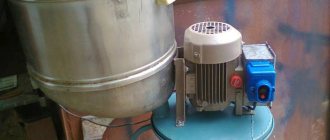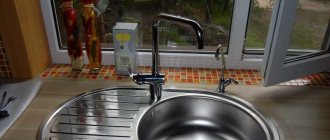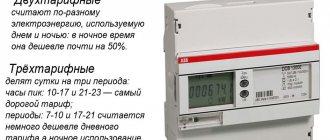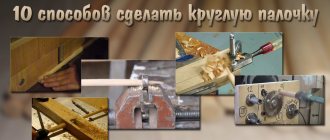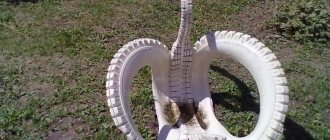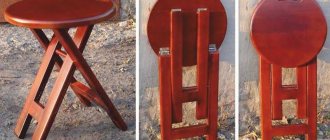Friends, every day we analyze who gets to our website and for what search queries. And we noticed that the word eternal log with your own hands received a lot of requests. Accordingly, readers wanted to find this information on our website. Maybe this is due to the fact that we have articles that describe products made from logs, stumps, saw cuts and they think that this also applies to us.
We decided to study and describe in this article what kind of wonderful log this is, which will help you save on heating costs and how to make it yourself, especially since there are a lot of negative and positive reviews on the Internet.
The device of an eternal log is shown in the diagram below.
Eternal Log Drawing
This is not a log, but an ordinary metal pipe, welded on both sides. There is a hole in the pipe that can be closed using a valve. Water is poured through this hole and fills the entire volume of the pipe. Several small holes were also made along the entire length of the pipe. Accordingly, to prevent water from pouring out through these holes, legs were made.
According to the inventor in the video, this eternal log is an endless source of savings on heating and will work for a long time.
It is also said that the stove will work more efficiently.
How does it all work? Water is poured into the pipe, preferably hot, so that heating is faster, but cold is also possible. You can insert a funnel into the hole to ensure that water gets into the hole accurately. With hot water, the full effect of the formation of saturated steam begins faster.
How it works
Eternal logs can reduce wood waste by almost half. It all depends on the design of a particular stove. Most often, the savings figure reaches thirty percent, but sometimes fifty.
The specific heat capacity of steam is greater than that of air. If for air the indicator reaches one kJ, then for steam it reaches two.
It must be said that such a log is not suitable for all stoves that burn wood. An eternal log is perfect for a potbelly stove with a straight chimney. But if you have a brick stove with a duct chimney made in the wall, then problems may arise in the form of condensation from unburned steam. In this case, you need to inspect the chimney inspection hatches and make sure that there is no sticky soot there. If it is absent, then the use of eternal logs is quite acceptable.
If you do everything according to the instructions, you will definitely end up with an eternal log.
Efficiency
The creators of videos and authors of articles that describe the process of creating an “eternal log” are misleading users. According to the information they describe, the efficiency of such a furnace is significantly increased due to the fact that when burning in a water environment, Brown's gas is formed - a chemical reaction of the decomposition of water into oxygen and hydrogen and further mixing with air).
In practice this is not the case. The combustion temperature of the fire is not enough to decompose water into its elements. To do this, you will need to heat the evaporation chamber to values of over 3 thousand degrees Celsius, when when burning wood the indicator does not exceed 600-700 degrees.
Accordingly, the efficiency of the “eternal log” stove decreases. When using such a mechanism, half of the released thermal energy is spent on heating water, when it could be directed to the stove, which in turn heats the room.
The main task for which such a furnace is used is generally ensured. Firewood does burn longer, but the benefits from this are much less. A similar design will be relevant if the fire in the stove is used as a source of lighting, but in this case it should be made of transparent materials, for example, tempered glass or heat-resistant polymers. In other cases, the “eternal log” does not work.
As the duration of wood burning increases, the temperature in the chamber decreases. This means that the products of wood combustion (soot and tar) evaporate in smaller quantities than would be the case without the presence of water in the stove. This leads to the fact that the inner surface of the “eternal log” and the chimney become dirty faster, since approximately half of the usual remaining food does not burn, as happens in a conventional oven.
Why does it work
Using an everlasting log increases the duration and quality of combustion of one load of firewood. Fire and heat can last up to 50 percent longer, depending on the design of the stove. Personally, for me, combustion is extended by up to 30 percent. My friends with other stove parameters have seen savings of 15 percent or more, which is explained by the inappropriate parameters of the dimensions of the log itself for their firebox. This result is achieved due to the fact that the specific heat capacity of water vapor is higher than that of air. This is a physical fact that has long been proven. For air this indicator is 1 (kJ/(kg K), and for steam it reaches 2 (kJ/(kg K).
I would also like to note that eternal logs are not suitable for all types of wood stoves. It is ideally compatible with ordinary potbelly stoves with a direct chimney. If a brick stove has a duct chimney in the wall, then in certain cases there is a possibility of condensation of unburnt steam. If you want to use eternal logs with this stove design, I advise you to inspect the inspection hatches of the chimney for the appearance of sticky soot. If it is not there, then the log is suitable and you can safely use it.
Anyone who has fired a stove, steam stove or potbelly stove at least once knows perfectly well how quickly firewood burns out. Even today, many dachas have solid fuel stoves. In order to maintain a constant temperature, such stoves should be refueled regularly. However, there is one clever method that will make logs burn 30 to 50 percent longer while still producing the same amount of heat.
Device and features
A wood stove that does not have the ability to regulate the volume of combustion air will use up fuel too quickly. This increases the temperature of the exhaust gases and heat loss. Water vapor entering this zone helps reduce the intensity of combustion. The latter is formed in a steel container (steam generator) - an “eternal log”. Water is poured into it before putting firewood into the stove, and it is placed at the bottom of the firebox.
For your information!
The use of a steam generator in a closed firebox is associated with the danger of a thermal explosion. During operation, it is necessary to ensure the cleanliness of the surface and promptly clean the steam outlets.
Efficiency and savings
When lighting a fire outdoors or a fire in a stove, you may notice that wet wood burns more slowly than dry wood. This is explained by the fact that the heat of combustion of the fuel is spent on heating and evaporating water. The operating principle has found application in heating a private home. The idea of the device is to use water as a moderator to increase the burning time of one load of fuel. In this case, during combustion, wood partially wastes thermal energy to produce steam.
Depending on the design of the furnace and steam generator, you can get, in %:
- increase in burning time – up to 50;
- increase in heat transfer of flue gases – up to 15;
- reduction in wood consumption for heating – up to 30.
Operating principle
The steam generator consists of a metal pipe, hermetically welded at the ends, support legs, a filler neck and holes in the upper part. The principle of operation is the formation of steam: heat from burning logs is transferred to water through the walls. The liquid boils and exits in a gaseous state through the upper holes. The steam irrigates the firewood, thereby reducing the intensity of combustion. At the same time, it transfers heat from burning coals to the heat-releasing surfaces of the furnace. Application sequence:
- Water is poured into the pipe through the neck and the plug is closed.
- Place the steam generator on the grate.
- Firewood is being stacked.
- They ignite the fuel.
Eternal log: refinement and testing
There is such a topic. Video on the Internet. A version is described of why supplying steam in the firebox allows you to increase the burning time of wood.
As I understand it, the point is this: Superheated steam from the “Eternal Log” can, passing through hot, burning wood, essentially through carbon, disintegrate into hydrogen and oxygen.
I'm not good at chemistry. The hydrogen then burns. This is additional fuel in the stove. You need a temperature of degrees, but everything is correct.
If you simply place a “jar with holes” in the oven and pour water into it, there will really be little benefit: the water will take away heat for evaporation, and raw, not superheated steam will simply fly away into the chimney. The benefit of such a device is doubtful. But - if you make another shell of thick iron around the standard “eternal log” - the steam will overheat between the walls and participate in the combustion process. Since I have a “vertical” boiler, I made the log vertical from what I had on hand on the farm.
What makes you think that some additional fuel is taken? It’s just that what exists burns more slowly and with greater losses.
In the end, is this a myth or reality?
What can we say about this? All this, of course, is not true, the laws of physics have not been repealed and the law of conservation of energy still exists. Accordingly, in order to obtain additional energy in one place, you need to spend this energy in another. You also always need to make sure that the holes are always open, otherwise a water hammer may occur and the entire firebox will turn around.
There is only one piece of advice - a well-built stove will save fuel and keep you warm for a long time. But to do this, you need an experienced village stove maker who can determine the volume of the house and build a stove of the required size.
How often should cleaning be done using Chimney Sweeper logs?
It is recommended to carry out the cleaning procedure regularly, at least twice a year. The frequency of cleaning largely depends on how often the stove or fireplace is used. For example, if the fireplace is lit once daily, it is enough to carry out preventive cleaning twice a season, using one block each time. If the fireplace (stove) is lit no more than once a week, one log for the heating season is quite enough.
Despite the emergence of new types of boilers and stoves, wood heating remains relevant for heating summer cottages and small houses. The efficiency of its operation and fuel consumption depend on the correct organization of the system. But besides this, it is important to know how to heat your stove or boiler with wood so that the house is warm.
Properties of "Eternal Log"
The design of this product is simple, but provides many useful properties.
HARMFUL FOR THE FIREBOX
Narrow nozzles do not provide the opportunity to deliver a steam boost, and the steam itself is not aggressive in its structure. Your stove/boiler will remain intact!
COMPLETELY SAFE
The logs are designed for different power boilers and they work on the properties of Brown's gas, and not on increasing the pressure in the firebox.
RELIABLE DESIGN
- 1. Narrow nozzles. When heated under pressure, Brown's gas is created.
- 2. Steam chamber.
- 3. High-quality steel 08Х17Т, not exposed to mildly aggressive (atmospheric) environments
- 4. Water hole
SAVES FUEL
Increases the burning time of firewood with one stack due to the thick mixture of air and steam; the fire burns less intensely.
THE HEAT DOESN'T LEAVE
The steam retains heat in the firebox, which eliminates overheating of the coolant, a situation where the firewood quickly burns out and is cold again.
Manufacturing
We take a pipe with a diameter of 76 mm and cut it to the length of the block. If you have a large combustion chamber in your stove (and you can load a lot of firewood into it), then it is recommended to use a pipe as thick as possible. There is nothing complicated in the process of making the device itself. First, you need to cut two circles along the diameter of the pipe from the prepared sheet metal and weld its ends hermetically. The stable legs should be welded crosswise.
After this, we make a filling hole by drilling a hole in the top of the tube and welding the nut. A bolt prepared in advance is screwed onto it and becomes a lid. It is recommended to weld a metal rod to the head so that it can be turned without using a key.
Log construction
Do-it-yourself eternal log to save on heating costsis the simplest design. For its construction, available materials will be useful. To make an invention, no special skills or abilities are required. It is enough to own a welding machine and an angle grinder. First you need to take a sheet of metal and a steel pipe 250 mm long. When choosing design parameters, you should focus on the depth and width of your own boiler. 2 circles should be cut out of the sheets, corresponding to the pipe diameter - 75 mm. The circles are welded to the end parts of the pipe.
Next, from one edge of the eternal log with your own hands
you need to make a large hole that serves as a neck for filling water. A nut is welded to the hole (the diameters of the holes must match). A handle is attached to the bolt, resulting in a high-quality lid.
Next, several small holes with a diameter of 2 mm are made along the entire length of the pipe at a distance of 40 mm from each other. They fit in line with the neck. Two steel rectangles are attached to the bottom of the pipe, making the structure more stable.
Primus
The most perfect and convenient way to organize a log stove. It gives a high concentration of flame and can be made in a “mini version” with a height of 20-30 cm. In order to organize a “Primus”, you will need several logs, and not necessarily from one log.
Operating procedure:
Cut the block to the specified size.
We divide it into 4-6 parts with an ax or saw or select suitable logs.
We gouge out the core and make notches (chips).
We connect the logs with wire so that we get a “well” inside. If the logs are large, you can make 2 of them shorter than the others. This will provide an influx of oxygen for pyrolysis during installation of the pot or pan.
The cold hearth before lighting should look like this:
Load the chips into the free space inside the stove.
Set it on fire and use it. Pay attention to the flame - pure pyrolysis combustion.
Larger options can be used for general purposes.
The optimal length of a log (chock) is two of its diameters. The ability to cook food and boil water is available for the first 2 hours after ignition, until the logs burn out.
Video on how to make a primus stove
We make an eternal log and save up to 50% on firewood.
If you have to use an ordinary wood-burning stove for heating in your country house or any other place, then you probably know that the fuel in it burns out very quickly. Most of the heat generated during intensive production simply evaporates into the chimney. Because of this, you have to constantly add firewood to the stove to maintain a comfortable air temperature in the room. To solve this problem, you can use not firewood, but an eternal log, which will save up to 50% of the money spent on heating.
How to make it yourself
Due to the simple design and the absence of complex-shaped components, even a craftsman without experience in the manufacture of metal products can make a steam generator. Tools you will need:
The main part of the steam generator is the housing. It is advisable to make it from a pipe with a thick wall (6-7 mm). The diameter and length are selected according to the size of the firebox. Steam generators that are too large will not fit into the oven, and in small ones the water will quickly evaporate. For the neck, you need to prepare a nut and bolt M 12. At the ends of the pipe, two disks 5-6 mm thick are welded, which are equal in diameter to its outer size. The support legs are made from any rolled metal: pieces of reinforcement, a circle, a corner, etc. The main thing is that the steam generator must be stably placed in the firebox.
Water more actively transfers more heat from the wood to the walls of the stove than dry air
After a while, when the water boils, steam is formed, which quickly comes out of the holes. Warm air and steam mix inside the stove to form a mixture, the heat capacity of which is almost twice that of ordinary air, as a result of which the stove warms up better.
Is it necessary to put firewood together with Chimney Sweeper logs?
The use of the “Chimney Sweeper” product is completely acceptable without “support” in the form of coals or wood firewood. However, hot coals left over from the previous fireplace firebox (stove) or dry firewood placed before cleaning the chimney using a Chimney Sweeper log will significantly enhance the effect of using this product. When cleaning the chimney with a “Chimney Sweeper” log in combination with firewood (coals), a block of the product is laid out on top.
Forbidden! Burn more than one log in combination with hot coals.
